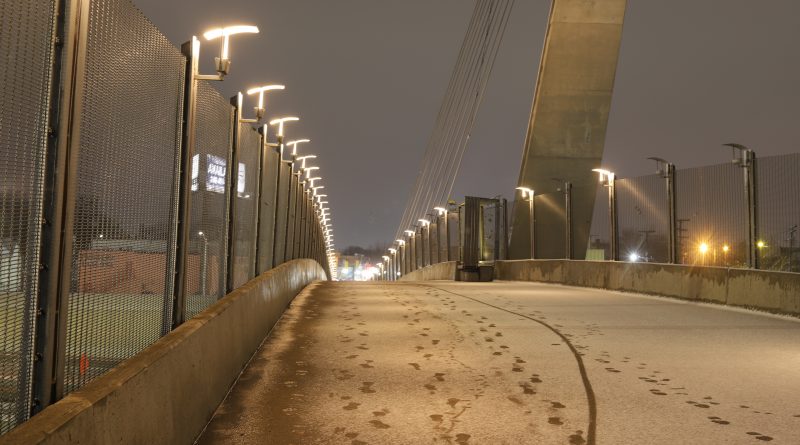Biden Infrastructure Plan: What All Is Included?
Fox News’ Tyler Olson came out with a particularly odious piece today on the Biden infrastructure plan that the administration just released. The complaint– common among a right-wing media that suddenly cares about reining in reckless spending- is that not enough money is spent on actual infrastructure. $400 billion, indeed, is allocated for expanding senior care and housing. Okay, so, that’s a complaint. It’s an important thing, but it’s not quite infrastructure. Said Mitch McConnell:
“This plan is not about rebuilding America’s backbone. Less than 6% of this massive proposal goes to roads and bridges […] It would spend more money just on electric cars than on America’s roads, bridges, ports, airports, and waterways combined.”
Cars, and cars alone
Republicans seem obsessed with the idea that “infrastructure” includes one thing and one thing only– car infrastructure. Obviously, this is ridiculous, considering the millions of Americans who can’t afford a car and rely on public transit. What are they supposed to do? Ah, yes, bootstraps! Work harder and pray harder! Oh, Lord, won’t you buy me a Mercedes-Benz? Nah.
The “Mobility” Council’s Report: Buy A Car, Peasants
Fox interviewed the Cato Institute’s Chris Edwards. We know I have a lot of feelings about Cato and its minions, especially on infrastructure. Even though I don’t always disagree with them. It would be objectively incorrect to say that there isn’t a massive amount of federal waste. Chris Edwards wrote a book about how gubmint spending is awful. (I just always think it’s funny how Cato gets cited by the right wing media when it’s a Democrat talking about policy). Of the Biden infrastructure plan, though, Edwards said:
“Manufacturing, $300 billion. Electric vehicles, $170 billion. Broadband, $100 billion. Electric power grid, $100 billion. This is completely unneeded and it’s also very dangerous because we don’t want the federal government manipulating what broadband companies do, what electric power companies do.”
“First World Infrastructure = Government Manipulation”
I’m sorry. Did one of the free marketeers just say that investment in the power grid constitutes government manipulation? Did you all forget about what just happened in Texas? Largely as a product of complete deregulation in the holy name of the free market?
Modernizing the grid isn’t about federal meddling. It’s about empowering local communities to embrace smaller-scale solutions for distributed generation as well as efficiency and optimization. We will hope that the Biden infrastructure plan will become more precise in explaining exactly how this money is to be allocated beyond the current, 25-page summary.
In greater detail
Let’s have a more detailed look at the proposal. We’ll put a check next to the ones that constitute “infrastructure.” The following list was adapted from this NPR summary on the Biden infrastructure plan. The big’uns– $489 billion- are in this first batch:
- ✅ $174 billion in electric vehicle investments. Yes, I have some ambivalence– that it’s a de facto subsidy for the auto industry. But it seems that a bunch of this is actually dedicated toward electrifying transit, which has lots of benefits.
- ✅ $115 billion for bridges and roads. This is definitely infrastructure.
- ✅ $100 billion for high-speed broadband.
- ✅ $100 billion for the electric grid and clean energy. Yes. Probably about time. Further reading: Gretchen Bakke’s The Grid.

And then…
$424 billion is distributed across these items:
- ✅ $85 billion for existing public transit. Definitely vital infrastructure that serve the millions of Americans who can’t afford a car.
- ✅ $80 billion for railways. Things that move most of the continent’s bulk materials and a growing number of passengers to boot.
- ✅ $56 billion for modernizing water systems. Ah, yes, water, that life-giving substance! Not infrastructure?
- ✅ $50 billion to improve infrastructure resilience. Did you guys miss what happens every time there’s a hurricane in the Gulf? Or every time there’s a windstorm in the Midwest?
- ✅ $45 billion to remove lead pipes. Remember Flint? Anna Clark wrote a great book on it.
- ✅ $25 billion for airports. People fly in planes, sometimes? Right?
- ✅ $20 billion to improve road safety. Definitely vital infrastructure. Pretty sure Angie Schmitt wrote a book about the epidemic of pedestrian deaths.
- ✅ $20 billion to reconnect urban neighborhoods cut off by highways. Yes. Please.
- ✅ $17 billion for waterways and ports of entry. Seems important, right? I’m pretty sure a double-digit percentage of our economy is imported, right?
- ✅ $16 billion for putting Americans to work plugging oil and gas wells and restoring and reclaiming abandoned mines. Seems valuable, but what do I know?
- ✅ $10 billion for a Civilian Climate Corps. Sorry, I admit– I guess climate change isn’t infrastructure. But it seems pretty important. Just saying.
Okay, well, those things sound like infrastructure for me. If you want to beef with the $400 billion for senior care, or whatever, that’s fine. But it’s well past time we start considering infrastructure as “things beyond just additional lane miles with A-rated levels-of-service.”
We will be providing updates about the Biden infrastructure plan as they materialize.




